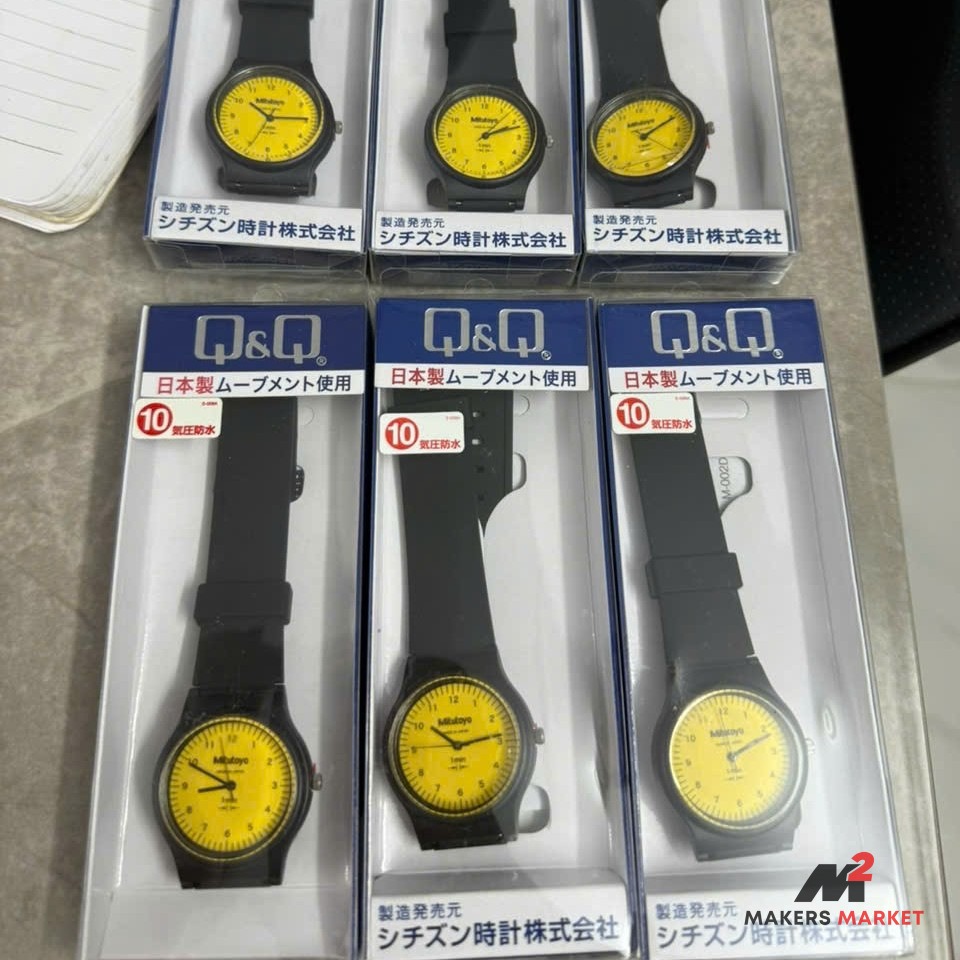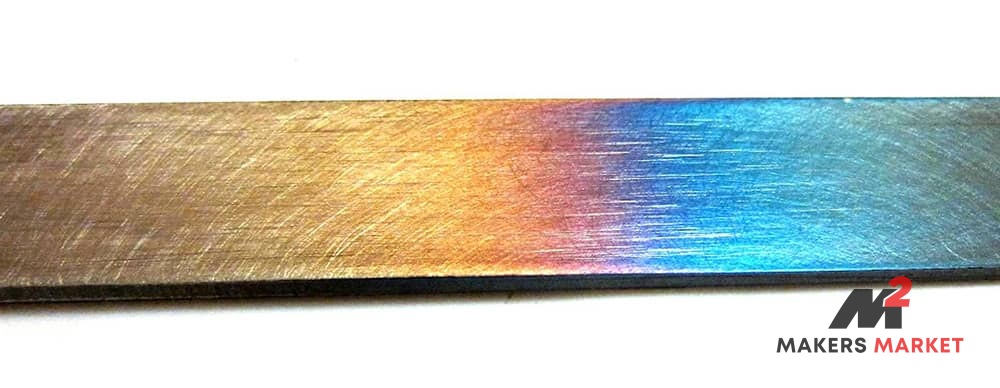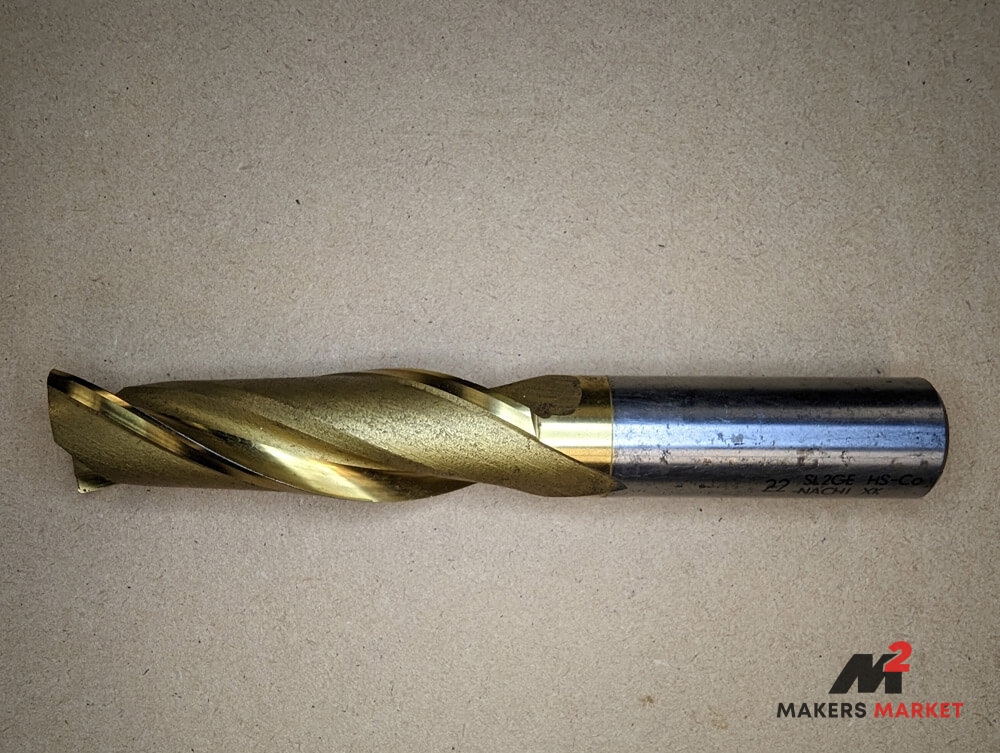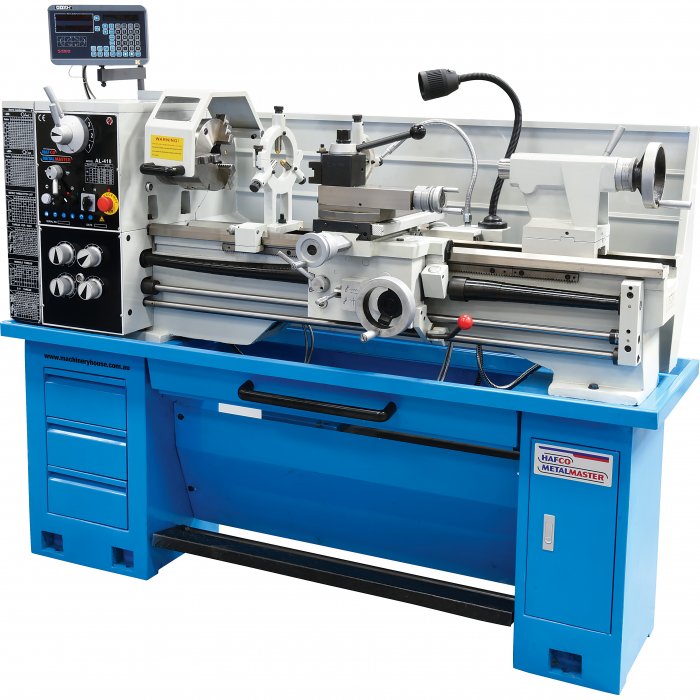Every now and then something odd turns up with the Mitutoyo name on it.
Most of the time it’s a dial gauge, a micrometer, or a digital calipers, things built to within microns.
Then there’s this thing: the Mitutoyo watch.
I picked up a few of them a while back. They looked the part, bright yellow dial that mimics a gauge face, Japanese writing all over the box, but a “Made in China” sticker on the back of the watch…
Seemed like a cool bit of merch for the bench-guys who already own half of Mitutoyo’s catalogue.
So What Is It, Really?
The specs are actually fine on paper:
- Japanese quartz movement (Citizen)
- ± 15–20 seconds a month accuracy
- Lightweight ABS case
- Rubber strap and stainless buckle
Nothing terrible there, actually all quality. Citizen watches are known for being well made.
But turn it over and you’ll spot a little “Made in China” sticker hiding on the caseback.
That’s when it clicks: these aren’t a Mitutoyo engineering project, they’re more of a promotional run, probably handed out at trade shows or sold as novelty merch for fans of the brand.
Build Quality & First Impressions
I’ll be honest, they don’t feel like something that came out of Mitutoyo’s gauge factory.
The dial design is clever and fun, but the case and strap remind me more of a mid-range department-store watch.
Functional, yes. Precision masterpiece, no.
When I first got them, the price was actually higher than I’ver since seen in Japan, which made me scratch my head a bit.
After checking them out up close, I reckon they’re a fun collector piece, maybe to hang on your toolbox or gift to a fellow machinist, but not a serious bit of kit.
Who’s It For?
If you love Mitutoyo gear and want a conversation starter, you’ll probably enjoy it.
If you’re after a high-end timepiece, or Mitutoyo 1um quality.. no!
Think of it as a small nod to the brand that’s measured half the world’s workshop parts, not an everyday watch you’ll brag about at the pub.
I still get messages about them, so if you really want one, I can track one down for international shipping, Pre-order link — but it’s not something I keep on the shelf or promote.
Want Real Mitutoyo Quality?
Now, if what pulled you here was the Mitutoyo part, not the watch, then you’re in luck. That’s what I actually do:
Mitutoyo Micrometers
Vernier & Digital Calipers
Test indicators & Mag bases
All tested, genuine gear that’s built to last decades, not just tick away a few years on a wrist.
Final Thoughts
The Mitutoyo watch is a bit of fun, a novelty from a precision world.
It keeps time, it looks like a gauge, and it’ll probably start a few conversations in the workshop.
Just don’t expect it to measure anything more accurate than lunchtime.
If you’ve got one, wear it proudly.
If you’re chasing real precision.
– Neill
Makers Market AU
(Where the tools are precise, even if the watches aren’t.)
Mitutoyo Watch FAQs
Not officially. These watches appear to be promotional items made for trade events, using Mitutoyo branding. They feature a Citizen quartz movement and gauge-style dial.
It depends what you expect. It’s a fun novelty for engineers and machinists but not a high-end watch. I offer them by special order for collectors.
Makers Market AU can special-order them. Visit our Mitutoyo Watch Pre-Order page →.













